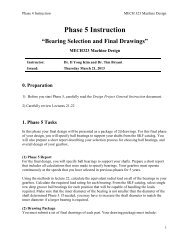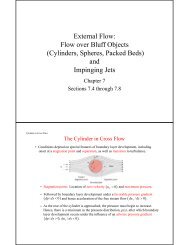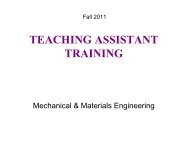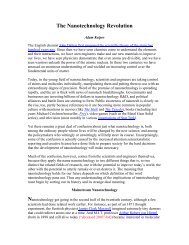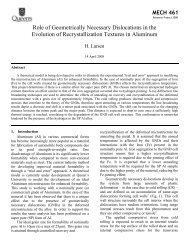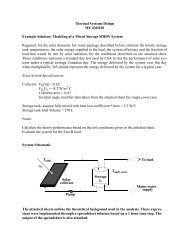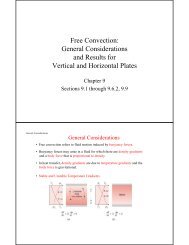Numerical Study of Passive and Active Flow Separation Control ...
Numerical Study of Passive and Active Flow Separation Control ...
Numerical Study of Passive and Active Flow Separation Control ...
You also want an ePaper? Increase the reach of your titles
YUMPU automatically turns print PDFs into web optimized ePapers that Google loves.
<strong>of</strong> the airfoil at this angle <strong>of</strong> attack. The friction coefficient C <strong>of</strong> all the three cases is<br />
f<br />
shown in Fig. 28. In Case 2, there is a sharp increase in C immediately downstream <strong>of</strong><br />
f<br />
the active vortex generators, which brings in extra kinetic energy to the flow field <strong>and</strong><br />
leads to an early transition.<br />
Fig. 27. Mean pressure coefficient <strong>of</strong> Case 2<br />
in comparison with baseline <strong>and</strong> Case 1<br />
30<br />
Fig. 28. Mean skin friction coefficient <strong>of</strong> Case<br />
2 in comparison with baseline <strong>and</strong> Case 1<br />
A comparison <strong>of</strong> the chord-wise distribution <strong>of</strong> peak turbulence kinetic energy k <strong>of</strong> all<br />
three cases is given in Fig. 29. It is obvious that the active vortex generators located at x =<br />
0.1C have triggered immediate transition downstream as there is an abrupt rise in k<br />
starting at x = 0.1C. The mechanism <strong>of</strong> transition <strong>and</strong> separation control in this case is<br />
probably different from that <strong>of</strong> the baseline case <strong>and</strong> Case 1, where the transition occurs<br />
in the separated shear layer due to amplification <strong>of</strong> the Kelvin-Helmholtz type instability.<br />
In Case 1, the reduction in bubble size is caused by the streamwise vortices created by the<br />
passive vortex generators. The momentum transferred by the vortices enforces the<br />
separated flow to reattach. But in further downstream region, the reattached flow fails to<br />
resist the pressure rise <strong>and</strong> separates again, followed by the transition in separated shear<br />
layer <strong>and</strong> reattachment. In Case 2, the early transition process triggered by the active<br />
vortex generators must play an important role in eliminating the separation bubble.<br />
Otherwise the reattached flow would separated again as it happens in Case 1, because the<br />
streamwise vortices created by the periodic motion <strong>of</strong> the active vortex generators do not<br />
sustain after the vanes are fully retracted during a duty cycle. Also compared to the



